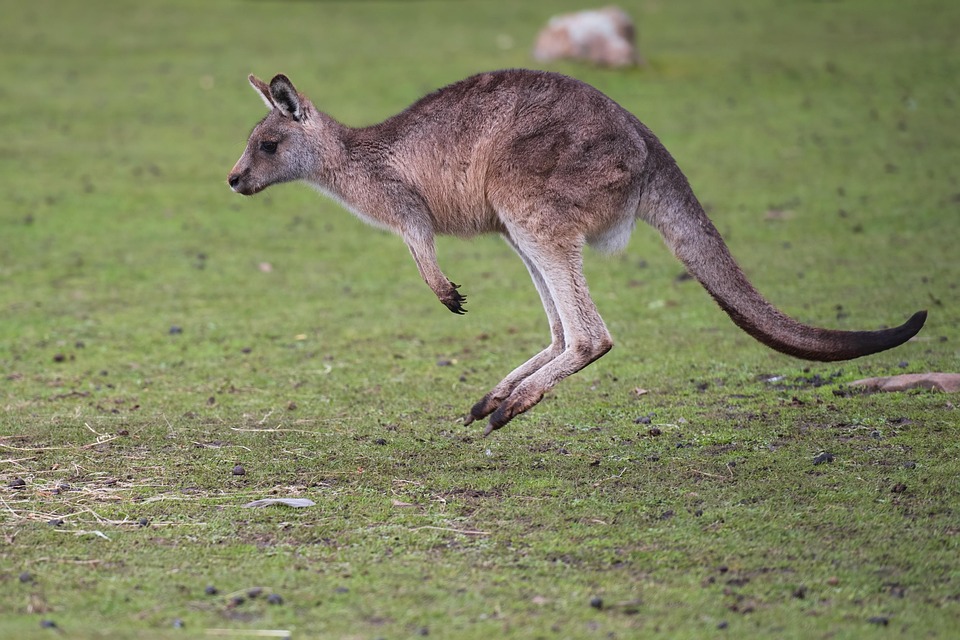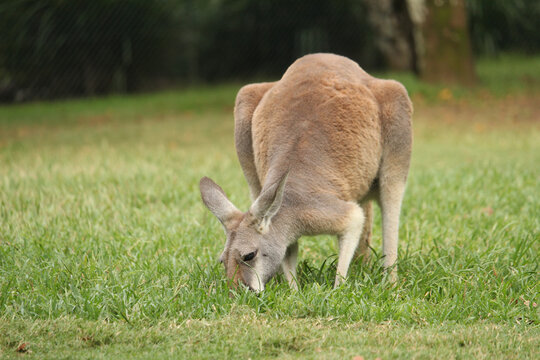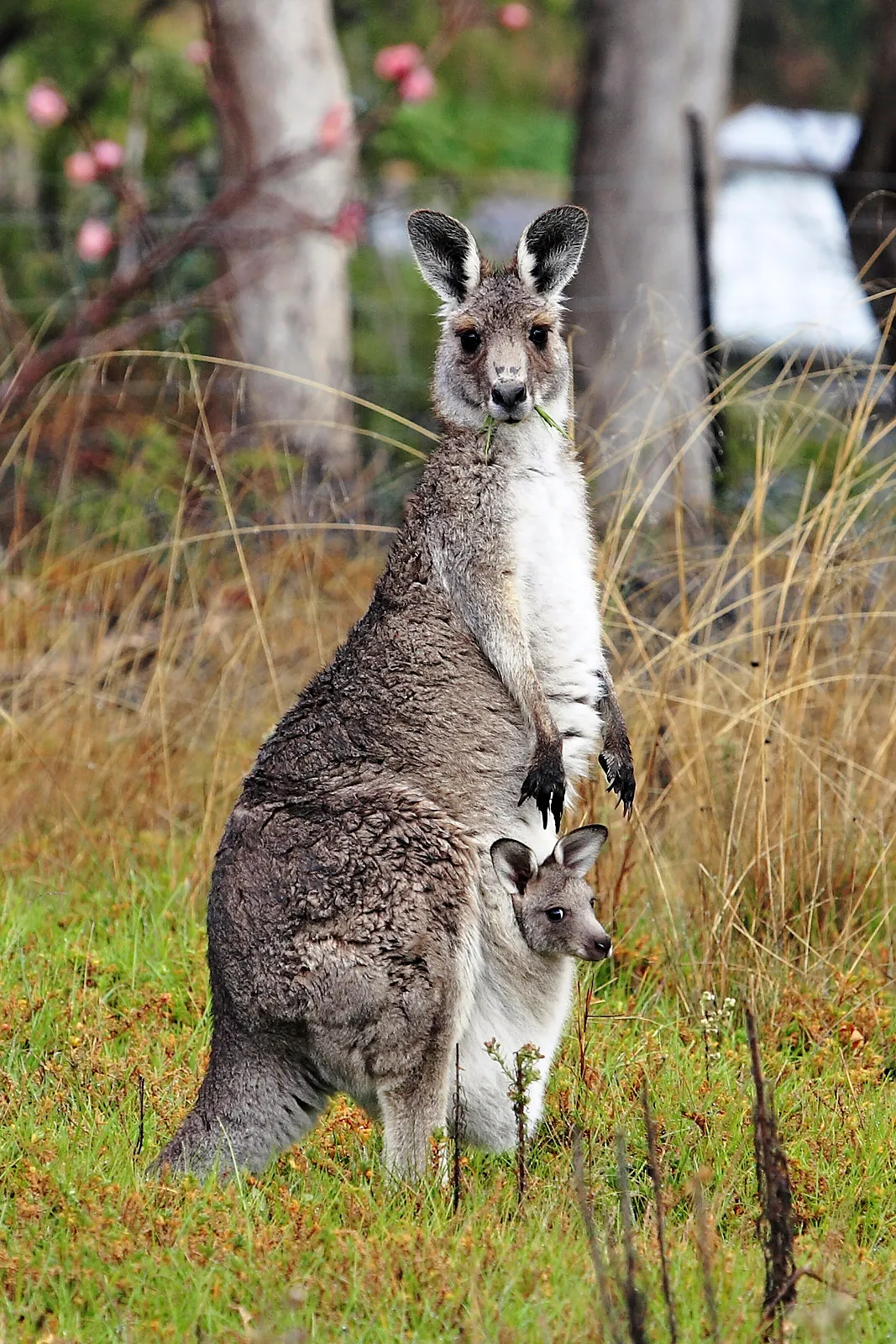Kangaroos
General Information
Kangaroos belong to the family macropodidae and genus macropus. The word Kangaroo originated from the word ‘Gangurru’ and the name was given by the Guuga Yimithirr people of Far North Queensland, with the top three species being Red Kangaroo(Macropus rufus), Eastern Grey Kangaroo (M. giganteus) and Western Grey Kangaroo (M. fuliginosus).
Appearance
Kangaroos typically have a coarse, short-haired coat that ranges in color from grey to reddish-brown, with lighter undersides and sometimes darker markings on the face or ears. They vary in size by species, with the largest, the red kangaroo, standing up to 2 meters tall.

Lifespan
In the wild kangaroos typically live around 6 to 8 years, though some can live up to 12 years. Their lifespan is often shorter due to predators, drought, and other environmental challenges.
Diet
Kangaroos stomach is shaped like a chamber, which aids in the digestion of varying plants (grass, leaves, fruit, ferns and flowers). They have front incisors which enable them to cut away grass very closely to the surface of the ground and molars to chomp away at vegetations, which are often replaced after it has worn down. Alike to cows they’re also well known to regurgitate food that has not been properly ingested, to chew and then swallow it again.

Habitat
Kangaroos' habitats are woodland, grassland and pastureland, with some species favouring certain habitats over others. Unfortunately, their habitat is slowly diminishing as a result of urban sprawl, the expansion outwards of towns and cities. As this pushes kangaroos out of their natural habitats, they are more likely to be around roads and highways, and their chances of being hit by cars is increased.
Located
Kangaroos are seen across Australia, with a larger majority in the northern and eastern edges of the country.

Main Threats To Kangaroos
Main threats to kangaroos are predominantly their loss of habitat as well as the presence of predators such as foxes. Kangaroos are killed for profit in the modern day with a number of four million and counting. They’re often killed for their meat as well as their skin, with the skin used for the production of leather and meat often used for the manufacturing of pet food.
Vehicle accidents are also one of the biggest threats to kangaroos. When kangaroos are moving from one grazing place to another, as they cross the road that is when kangaroos are often hit.
Climate change is also a big contributor to the depletion of the kangaroo population. The rising temperature also means less rainfall causing more drought seasons and drought would result in waterholes drying up. Which means that kangaroos are left without a viable water source.

What to do if you find an injured kangaroo...
Do not approach an injured kangaroo as they have sharp claws and can kick very strongly. Instruct other individuals to stay at a safe distance. Call a local wildlife carer or shelter, and ask for assistance. If you do not know your local shelter, you can contact Wildlife Victoria (Ph 8400 7300) for more help.
If the wildlife’s injury was caused due to a road collision, ensure you are not in the way of oncoming traffic so you don’t put yourself in danger. Check surroundings for a young joey in the case where it has been thrown out of the pouch. If one is found, keep the young warm by wrapping it up.
Lastly, do not feed or give the kangaroo water! This is due to the fact that they must undergo assessment first in order to determine what kind of treatment they may require.
Find more Information here



